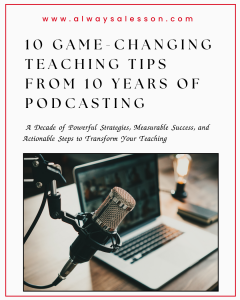EOG Relooping "AHA's"
As stated in my previous post , my students have begun to review skills that will be tested on the End-Of-Grade (EOG) test. Students rotated through each third grade teacher’s classroom focusing on one math and one literacy standard per 2 hour block.
This experience was quite interesting to say the least. In my reflection of “did this work?,” “was it feasible?,” and most importantly, “would I want to do it again?” I began to write down my thoughts. Of course, any time I am thinking through a decision I list all the pro’s and con’s of the situation. I will use my up-to-date professional jargon here and refer to the categories as Plus (+) or Delta (-).
Here goes…!
+ I felt like I could really hone in on one specific aspect of a standard. I had time to thoroughly reteach the concept, engage students in a variety of ways, and then assess in a way that I was confident students would be able to demonstrate mastery due to this focused structure.
+ My students were able to zone in on one standard at a time instead of mentally transitioning through a mixture review of topics. Students were able to get really good at a particular skill before moving on. The momentum of success was infectious!
+ Teaching the same lesson repeatedly to each third grade class helped me fine tune my technique and deepen my understanding of the content. At first, I thought I would be sick of my literacy and math lesson after two weeks, but I was able to reflect after my first delivery, make a few tweaks, and try again the next rotation. Student behavior and data gave me feedback on the quality of my instructional practice.
+ Many skills intertwined into multiple standards. So students were able to hear and practice the skill in another environment, apply it in a new situation, and deepen their understanding of the content. Student assessment results began to increase after each rotation.
+ Exposing children to multiple teaching styles is imperative. Students get comfortable in a teaching style they like, and shut down in a teaching style that is less becoming. This process encourages students to hear material that they have already learned in a new way by a new teacher. This prepares them for their educational journey through middle school, high school and beyond. Students adjusted well. The break was refreshing for us all!
– I MISSED MY KIDDOS LIKE CRAZY!!! (not joking!) Being in a classroom for hours on end, day after day really builds a community. Our relationships have deepened and strengthened through trials and celebrations. I realized that I missed my students because they got my jokes, knew the routine, and are so gosh darn smart!! 🙂 [insert bias here]
– It is evident which teacher’s classroom has structure and which is more, shall we say, free. My Type A personality and my need for productivity/efficiency came to a screeching halt on a few occasions. I decided to choose my battles and focus on the instruction, not the behaviors created due to a different teaching style.
So after looking at my list, it is quite evident that it was a success overall. I will certainly encourage my teammates to try this again next year!
How has reflection helped you make an important decision in the classroom?




This is a fabulous idea! I’ve already forwarded your post to my whole team in hopes that we will give it a try next year – too late for this year!
This made my day! Thank you for sharing with your team. Head back over this way and let me know how it goes next year 🙂